Saint-Pierre, St Pierre and Miquelon #135
Open-air single walled fronton
› Location of the fronton
Address (approximate):
- Saint-Pierre, St Pierre and Miquelon
Coordinates GPS (latitude, longitude):
- decimal notation: 46.782948, -56.173579
- sexagesimal notation: 46° 46' 58.6128", -56° 10' 24.8844"
Nearby frontons (less than 5 kilometers)
- QRMG+7FG Saint-Pierre, 97500 St Pierre and Miquelon - #5621 (Trinquet • 39 meters)
› User reviews and comments
Le Fronton de St Pierre fut érigé par l’entreprise La Morue Française qui était gérée par la famille basque Légasse. Cette famille a érigé ce fronton pour des raisons électoralistes et sociales. Le fronton d’origine fut dynamité lors d’une campagne électorale plutôt chaude.
Les frontons sont l'expression la plus concrète de la présence basque dans les îles. Le fronton "Zazpiak-bat" place Richard Briand, fut construit en 1906 sous l'impulsion de M. Erausquin et le cercle Zazpiak-bat. Il devait remplacer un fronton en bois qui avait été brulé au début du siècle. Le Txoko-berri est le dernier né des frontons de l'Archipel et se trouve dans la commune de Miquelon. Il fut inauguré en 1986, soit 80 ans après le Zazpiak-bat.
📚 The Basque pelota (Euskal pilota) includes several ball games derivated from the Jeu de Paume. In most specialties, the game consists of sending, volley or after a rebound, the ball against a main wall, named fronton, so that it falls on the playground named cancha. The point continues until a team commits a foul (falta) or fails to raise the ball before the second rebound.
🤓 A fronton is a wall against which one plays Basque pelota. It is an architectural element present in almost all the towns and villages of the French Basque Country and, to a lesser extent, in the neighboring regions.
The open-air single walled fronton is a generally uncovered ground composed of a wall, or two (one at each end). There are frontons of all sizes (10 to 16 meters wide and 6 to 10 meters high), some are even covered.
In Basque, this place is called "plaza".
🌎 A large number of Basques (commonly referred to as "Basque diaspora") have left the Basque Country to emigrate mainly to South America and the United States.
It is sometimes called the "eighth province" of the Basque Country, which counts seven (Labourd, Soule, Lower Navarre, Navarre, Biscay, Álava and Gipuzkoa).
The diaspora actively promotes its identity through its traditional activities, such as dance, gastronomy, Basque games and, of course, Basque pelota.
👉 See all open-air single walled frontons
Added on September 09 2011
Last modified on April 11 2023
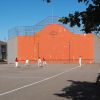
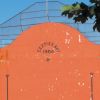
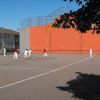
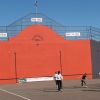
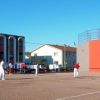
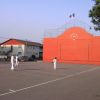
 @FRONTONS_NET
@FRONTONS_NET  Run Square
Run Square 
